The following review has been played for the majority on the 360 version of this game, with the Wii version played also, as a comparison.
Sonic Unleashed, for every mainline console is Sega's next “main” title in the Sonic franchise, following on from Sonic 06 for the 360 and PS3. Sega proudly announced that this will be a reinvention (again) of Sonic and that it will be his best game ever! Did they achieve that lofty goal? Or is this game unleashing nothing but another half baked gaming experience?
Sonic is once more at odds with the maniacal Dr. Robotnik (Once more just “Eggman” in the game, pity Chronicles' idea didn't catch on) at the start of the game, with the evil scientist having built a fleet of ships to attack the world from space! Undeterred by his large foes, Sonic heads out alone to deal with it. This is all resolved through a downright beautiful FMV at the beginning of the game by contracted animation studio Blur, as always. During his assault on the fleet, Sonic is forced to make the jump to Super Sonic in order to defeat it, annihilating anything that gets in his way. Pursuing the fleeting Robotnik to a space station however, it is discovered it is all a ruse, Robotnik has prepared a trap that can hold even Super Sonic! Sucking the power of the Emeralds dry (and creating one of the most hilarious facial expressions on Sonic's face in history), Robotnik fires a gigantic cannon at the Earth, shattering it into seven fragments. Eclipse Cannon...eat your heart out. The purpose of this is to unleash a mythical beast trapped within the planet for his own ends, although exactly what he plans to do with this “Dark Gaia” is never really explained. We can only assume it's the same as always. “Release monster. Try to control monster for own ends. Hope monster doesn't turn on you...again.”
This trap also happens to turn Sonic into a Were...hog, for some reason...
Those with a good knowledge of the English language can probably point out a few problems with that name.
After falling to Earth, defeated, Sonic lands, surprisingly intact after just dropping from ORBIT. Although on his way down he collides with a small creature named Chip. This character has lost his memory, and Sonic promises to help him regain his memory while searching for a way to cure his own Werehog state...and stopping Robotnik or course. Unfortunately, outside of a couple of characters seeing Werehog Sonic and going “Oh! You're different.” This presumably critical piece of story never actually is a part of the story at all, it's just...there.
Chip meanwhile takes the role of teaching you how to play the game (how he knows this when he's lost his memory we shall overlook for now) and acting pretty much as an ever-present guide throughout the game. One must wonder what was wrong with Tails for this part, as even after Chip's eventual reasoning for being included is revealed, he still feels completely pointless. You can't do anything with him, his tips are nothing more than game play hints, he plays no role in cut scenes other than to offer chocolate to characters and even in the end, is just plain un-necessary.
As the story progresses, Sonic and Chip must place Chaos Emerald inside temples to restore each fragment of the world. That's pretty much it. There's no twists to the tale, no revealing cut scenes and no changes to the direction of play. Overall, the story is somewhat simplistic at best and completely unknown or incoherent at worst. Sonic games aren't much known for story, but this is taking it a little too far in toning down its importance.
The final stages of the story produce a little more happening, but even then it's all very predictable. Seasoned Sonic gamers can probably spot the same formula as always about to crop up before it even happens, while the final fancy FMV of the game can be described as little more than requiring “Go, Go, Power Rangers.” for a soundtrack.
Playing the game is divided into three primary forms of interaction. Sonic stages, Werehog stages and Hub Worlds.
Sonic's stages are blistering marathons of speed through an area, seeking to reach the end as fast as possible without dying. The unique diversion from normal is twofold, the speed itself and the switching between 2D and 3D perspectives. To put simply, this is easily the fastest Sonic game ever made. The world literally blurs by so fast that you almost pity the poor modellers who's work gets passed by in under a second without it ever being seen. Sega claims you can reach simulated speeds of up to 300MPH, and after playing the game, I can say it's more like at least 300MPH! At his higher levels, Sonic hurtles along so fast you can barely even see an obstacle before it's already smacked into you...and herein lies the biggest problem, exactly that.
It may look awesome flying through a level, but especially in the 2D viewpoints where you can't always see ahead it's very easy for a hole or obstacle like spikes to suddenly crop up and hit/kill you instantly without a chance to avoid. Many criticised the Rush series for the same thing, while many felt it was “acceptable levels.” However with the speeds being even greater than ever now, the same problem is magnified much more. Thankfully once you know where things are, you are somewhat prepared and start being more careful, but you will always feel that disappointment that you can't just hurl forward like you really want to. There's another reason to have to slow down way too much as well, but we'll get to that later.
Sonic's levels do have minor areas of platforming in them, and I emphasise the word “minor.” You'll spend maybe a minute at most doing platforming in these stages, which is a real shame as they are easily the closest thing we've got to proper 2D Sonic platforming in a while. Certain segments of levels (especially some of them in Eggman Land) feel not too dissimilar to what every fan truly wants, so to see such a teaser of them is both wonderful and heartbreaking.
There is the occasional point when playing as Sonic when the speed segments do work, there's no annoying obstacles and little pits. These segments are quite fun sometimes to just fly through first time. They won't hold much replayability, but it's better than a bit that makes you cringe. Drifting (one of Sonic's new abilities) is a bit dodgy to control, with his grip on the ground being very loose, resulting in you simply running into the far wall and looking a bit daft. If pulled off correctly it looks nice, but the implementation is quite hit or miss.
To sum up Sonic's segments, they are between “alright” and “mediocre”, with the exception of a few levels are are quite literally “hold right/forward to win” where you spend upwards of 1-2 minutes doing nothing but pressing X occasionally and some others with some dodgy designs leading to cheap deaths. These levels are downright dastardly in design, with difficulty that has nothing to do with the player and more to do with merely guessing what's coming ahead and hoping you are right.
The Wii version pays pretty much the same, but with somewhat flatter tracks allowing for even less platforming outside of the “just run” feeling. The feeling of speed ain't quite as high either, so it isn't the best trade off.
Next up, the Werehog sections; Met with mass controversy, many thought they are barely recognisable as a Sonic game if there weren't rings, whereas others thought more on what the gameplay would offer. The good side is they are not as bad as Shadow's gameplay in his own game, so the “worst Sonic gameplay ever” title is still unchanged, but the bad side is...well...they don't really do anything good either.
The basic premise is that of slow but steady platforming combined with fighting monsters and robots. The Werehog is much slower than Sonic, about the speed of most game's normal characters and the jarring difference is all too obvious when you first play as it after a Sonic level. These two aspects of play are both below par, with small areas where they sometimes approach an average cheap title but at others can be truly diabolical in bad game design.
At first glance is all feels solidly made and well controlled and for basic areas it is, but it's only after you actually start using the Werehog in areas outside completely flat ground do you realise some errors. For example, during platforming, you expect to be able to grab a ledge. No, not with the Werehog, you can only grab specifically marked ledges, and only if you press B when it makes a small “blip” to indicate you are ok to grab it. It's like having to get permission from the game to do it, rather than it being of your own choosing. This is rather irritating in areas where you know you could reach a ledge, but you can't because it's not marked. So you have to go the long way around to get onto something lower than the ledge you climb onto to get to it anyway. The biggest problem is when doing balance beams, some allow you to grab if you fall, whereas some do not. There is no reason you can't grab ahold of them other than “they are not marked.”
Furthermore, having to jump, double jump and grab a ledge constitute far more button mashing than simply pressing “A” in most games. The double jump is rather inaccurate, leading to many odd deaths as you struggle to land on a small platform...that of course you can't grab onto because it isn't marked. The lack of a proper “jump shadow” in the design drastically heightens platforming difficulty, where we would normally use their shadow beneath to judge their position. This is a staple of 3D platforming games, but is oddly missing here.
It is also of note that many areas of the Werehog's level designs are a clear grab from other games and just pasted in, the similarities to Prince of Persia: Sands of Time in many places are uncanny, down to using the exact same wall-saws, double handles, hanging pillars and even down to outright design of a room at times. This isn't a cry of plagiarism, but all it does it set itself up to be compared to that classic platformer...and unfortunately it just pales in comparison. This feeling is only made worse in later levels where the platforming becomes inane, the controls and camera are too inaccurate to navigate without silly deaths and indeed it all feels way too repetitive. To list the individual game design faults in levels that cause annoyance would take far too long, but there are oh so many of them. Each of them is the sort of error you look at, shake your head and honestly wonder “What were they thinking?!”
The fighting isn't much better, pretty much hammering XXX and YYY for the entire fight. The Wii has more motion contextual movements, but unfortunately it comes down to the same idea in the end. Mindless spamming in the general direction of the enemy, a poor man's God of War. The Werehog's attacked are pretty uninspiring, and pretty much just aspire to him moving with stretchy arms outstretched with no real “oomph” behind anything. The fact that all enemies have ridiculously high HP also adds to the monotony of having to do combos again and again and again to the same enemy, just to kill them. You can increase your strength, but it makes little difference as enemies scale to meet you anyway in later levels. They don't even change their enemy type, it's just the same enemies as always (only a few variants) with higher health. Battles take far too long, with multiple waves of identical enemies assailing you repeatedly for minutes on end. It's hard to visually appreciate it either, there too many effects flying around in the air that it virtually hides everything on screen, worst of all being the trails the Werehog's claws leave. Additionally, the Werehog uses (rather oddly) a life metre, which can get gradually chipped down and away over these gruelling battles. What was wrong with normal ring systems, I have no idea.
The final big complaint about the Werehog though is just how long it's levels take. You can reach up to and including 20 to even 30 minutes sometimes, which compared to the 3-4 minute Sonic stages feels very lopsided on terms of game play balancing. Overall however, they could have been a lot worse than they ended up being, it's a black mark on the Sonic series for sure, but it's not quite as bad as some of the truly appalling games that have come before.
Finally are the hub levels of the basic game design trio. These are used as areas of exploration to talk to townsfolk, other characters and entering levels. There is both day and night variants for Sonic and the Werehog respectively, adding a little bit more to explore than just one play through.
They are an upgrade from the hub worlds found in Sonic 06 for sure, getting rid of the wide open and pointless areas of no real interest and replacing it with far smaller, but better designed segments of game area. Although the hub levels perform no purpose outside of talking and moving to levels (Indeed the Wii version condenses this even further to not even a playable area, just a screen most of the time) the fact that they are so small avoids a monotony factor quite nicely. The big failing however is the “town area” and the “level entrance area” are two completely different bits of map, with a loading screen in between. There isn't much reason presented to ever need to have them separate, and although it is hardly a game breaking design issue, it does create a few irks having to wait on another loading screen. In the end though, with the exception of a few minor challenges in the level entrance areas, you will mostly just be walking from area to area through these without ever needing to talk to anyone. It's a good save from Sonic 06's crippling town challenges, and anyone who has played that game can breathe a sigh of relief that the hubs aren't really that bad here, if a little bare to actually do things in.
All characters have bosses to face, and they are split quite neatly in two between being alright and being a bit boring. The Robotnik styled bosses are good fun through speed and the classic joy of beating up another of his wacky machines. There's some odd designs, but overall they work with some nice camera angles and ideas going on. The “Dark Gaia” inspired ones are mediocre, generally fought with the Werehog and just feel dull. Many of them take far too long to complete even if you are doing good at it, which quickly allows monotonous feelings to set in. The Dark Gaia bosses having somewhat uninspired designs doesn't really help here.
Sega seem to have caught on to a new idea the gaming industry has been liking recently, that of QTE's. For those who don't know, this is when a button flashes on screen very quickly and you have to press it in time to succeed. Elements of the QTE were first widely known from the old Arcade game Dragon's Lair and made into their modern interpretation by Dreamcast classic, Shenmue. Sonic Unleashed takes roughly the same form as Shenmue, throwing them in during boss fights. However it also throws them in against every single normal enemy in the game if you press B to throw them. It gets very repetitive, especially as it can be the only way to quickly finish off an enemy. It wouldn't be so bad though if when you failed it, the enemy didn't regain almost all its health for no discernible reason! Sonic's stages use them for accessing alternate paths or to avoid a platforming segment for speed purposes, showing you a quick selection of buttons to press, and if you are successful, you pass the test and gain the bonus of the level design. If you fail, you go to a slower path or even, sometimes to your death instantly. The latter can feel a little frustrating if you just mistakenly hit X while trying to boost, and a QTE suddenly jumps up before you press it leading to not even getting a chance to see the QTE before pressing the wrong button. Thankfully areas with that particular problem are minimal. However in general, QTE's feel over used. Bosses have them, levels have them, certain springs have them, normal enemies have them...it gets old pretty quick, especially with a very annoying “ding dong!” sound effect every time you pass one.
Unfortunately there is one more element of game design that takes Sonic Unleashed, a game already on the fence between “alright and bad” and hurls it quite forcibly to the bad side in a game design decision that comes very close to crippling the entire experience. Medals.
In most games, especially Sonic ones, when you complete a level, you expect to start the next one, or at least be able to. Not here. When you are told to go to a new level, you must first collect X number of sun or moon medals, depending on whether it is a day or night level. These medals are found everywhere, literally. However the majority are found within the weakest elements of the game, the Werehog stages. This forces replays of overly long dull levels, sometimes multiple times just to get enough medals to access the next level. This can take hours sometimes, and quickly can result in a console being turned off in frustration. Sonic's levels have medals, but it's almost not worth trying, you move so fast that if you miss one, that's it. You can't go back. Hub levels have a few, but usually only about 4 or 5 each. It sounds a nice amount, but near the end it starts asking you for “another 30 medals” on top of the hundred of so you already own. The amount needed is utterly ridiculous, and is nothing more than a failed attempt to pad out the game length. When the easy medals start running out and forced replays of the worse levels are needed, you know something is wrong, especially when the end prize is access to the 7th fragment's final level. It's hardly a prize, more a punishment, as this overly long level is nothing more than an exercise in bad game design throughout with the minor exception of a few 2D segments. Put simply, medals cripple this game almost beyond repair in this aspect, and will no doubt turn off many gamers from completing it.
One thing Sega were keen to boast about (including on the back of the game itself) is their new “Hedgehog Engine” powering the game. From what they said about it, graphical ability was expected to be high, after all, they claimed as such many times. It can certainly handle the speed, huge speeds were reached without a hitch in the frame-rate at all, which is rather impressive, actually. Graphically however, it doesn't impress. But that's not to say it looks bad, indeed it looks good. But that's just it, it's nothing special. However, any Sonic fan should be glad to know that Sonic Unleashed can stand alongside other next gen games and consider it's graphics finally equal. There's a few dodgy areas, but every game has them, so to nitpick them would be far too brutal. The art design is consistent and well done, humans now actually fit in, Sonic and friends animations are nicely done and the special effects look pretty good actually. Definitely an initial success on this end to work upwards from. The only slight downer is with a couple of exceptions, the world is still refusing to break out of “realistic looking” in many areas, even with a slight cartoon feel. Fans of the wacky Zones found in the more portable games won't find anything like that here.
Sound design throughout the game is solid for the most part. With a few very notable and awesome exceptions (Snow level, final boss theme) you probably won't be humming any for days to come. The Sonic levels tend to be fast paced themes of a chirpy nature, with no old rock in sight. (Some might miss it, others may say that's a blessing but for the most part I don't think anyone will mind) The Werehog and Town Hubs are a little less exciting, but they fit the part and blend in nicely. Some might find them relaxing but on the whole they aren't very noticeable, especially in the battles. The only real downer is the amazingly awful battle music that plays whenever the Werehog is in a fight, you will end up loathing that repeated piece of music by the end.
When it comes to summing up Unleashed, there is one big statement that can be made. If you intend to get this, regardless of what you hear, then get the PS3 or 360 version, it's massively superior to the Wii or PS2 variants in pretty much every way. Sonic Unleashed as a whole though feels very back and forth, it would be short sighted to call this game a big failure. It really isn't, despite the mass of negative points stated above. What this game shows instead is a step in the right direction. Sonic's levels, as noted, showcase some points where you honestly believe this is what 3D Sonic should be. Had they made it all Sonic levels, added more 2D platforming, removed that RIDICULOUS medal system and toned up a few segments, it could have been great. Although it misses that mark, it lets us know that Sega finally has the formula within their grasp. Now all that's left to do is wait and see what they do next with it.
As for this specific title, if you love Sonic games and aim to get it regardless then I advise picking it up on the cheap somehow. Half Price deals are all over the place this time of year, and online ordering is getting cheaper all the time, as this game is not worth full price by any means. For gamers who have higher standards to their gaming, you will want to skirt around this one. It has its moments, but they form only a tiny percentage of the overall experience. And unfortunately, “potential to be better” doesn't raise marks for a review.
|
||||||||||
|
||||||||||
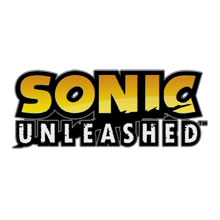 |
|
Console - Xbox 360, PS3, Wii, PS2 Game Type - Action Platformer Players - 1 Publisher - SEGA Price - RRP 360/PS3 £39.99 / Wii/PS2 £29.99 Reviewer - Iain Stewart |
|
STC's Rating System: Under 40 = Yawnsville 40-70 = Normalsville 70-80 = Fun City 80-90 = Big Time City 90+ = Mega City |
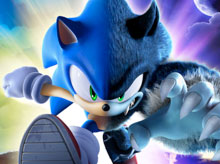
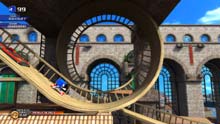
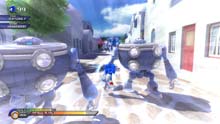
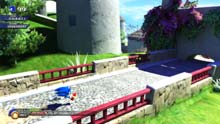
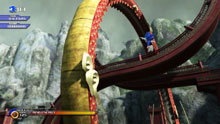
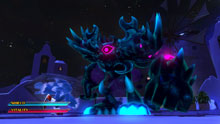
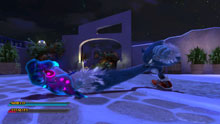
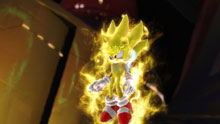
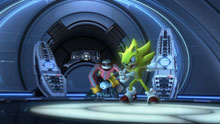
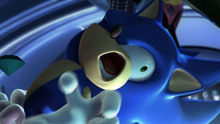
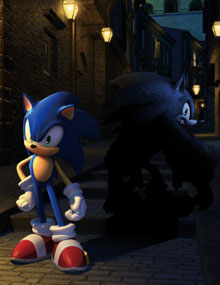
 |



